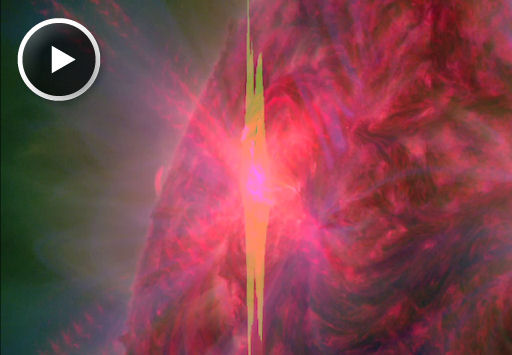 |
| The Cosmic Origins Spectrograph aboard NASA’s Hubble Space Telescope recently discovered a strong ultraviolet-wavelength absorber on Pluto’s surface. Image Credit: NASA/ES |
The new and highly sensitive Cosmic Origins Spectrograph aboard the Hubble Space Telescope has discovered a strong ultraviolet-wavelength absorber on Pluto's surface, providing new evidence that points to the possibility of complex hydrocarbon and/or nitrile molecules lying on the surface, according to a paper recently published in the Astronomical Journal by researchers from Southwest Research Institute and Nebraska Wesleyan University.















































